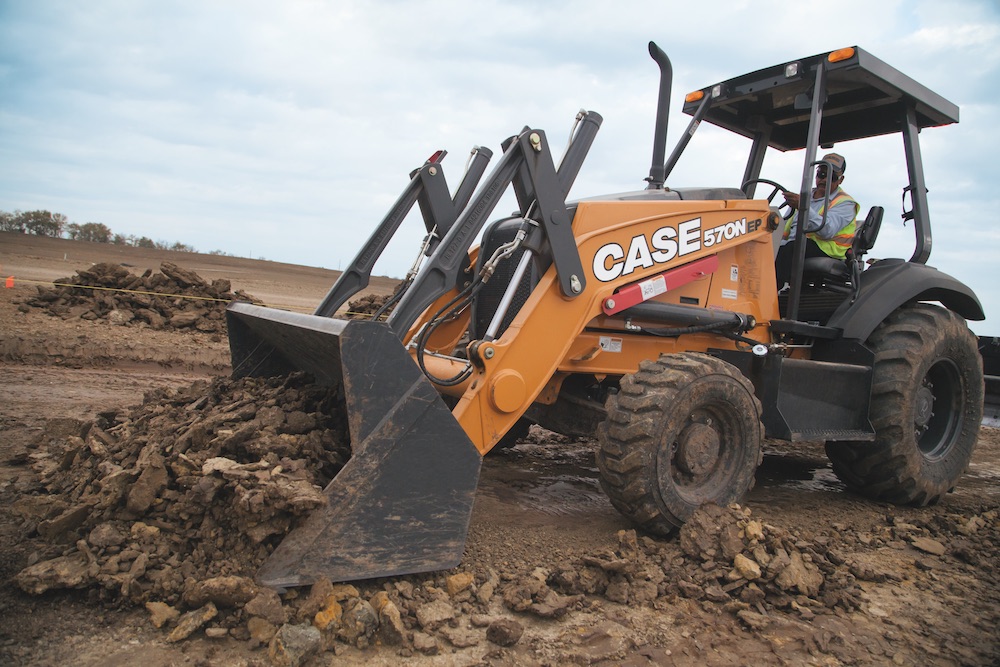
Vineyards left with Toxic Ash and Debris to clean-up, CASE 570N EP Tractor Loader to the Rescue
The wildfires that swept the entire West Coast in the summer and early fall of 2020 brought a grim reality to the 2020 vintage harvest. As many vineyards suffered from smoke-tainted damage. Smoke-tainted grapes are exactly what it sounds like, grapes exposed to smoke during a fire that will affect the taste of the wine. It is not harmful to drink smoke-tainted wine, but it will bring unpleasant aromas, smoky flavors and simply an unmarketable product to sell. However, there may be light at the end of the tunnel.
Any grapes affected from the west coast fires could possibly be repurposed into brandy. The grapes will have to go through a special distillation technique. The process will involve unharvested smoke-affected grapes and other fruits to remove undesirable elements and any presence of smoke taint. Once it goes through the final spirit run, where all traces are removed, and no smoke is detected the brandy is aged in barrels formerly used for bourbon or cognac for about 3-4 years.
We’re glad to hear that it’s not all bad news with the 2020 wine grape harvest, but what’s next if your vineyard was affected? If you’ve had smoke exposure follow the steps below according to the University of California Agriculture and Natural Resources:
Damaged crops must be tended to carefully and consistently, or you risk losing them altogether. Begin recovery of fire-damaged grapevine as soon as possible after the damage has occurred. The full extent of injuries may not fully manifest for a season, so keep tending practices regular, regardless of any positive or negative signs you might see. This means it’s time to clean, chop, and shred…
- Repair your infrastructure. Look at trellis support systems; Inspect irrigation systems for fire damage; Remove any damaged tubing or irrigation systems. A CASE Mini Excavator will be ideal to dig slim trenches.
- Trim scorched vines, leaves and branches. Check underneath burnt bark to see if the vine still contains viable tissue. Remember for “grafted” vines, the damaged vine must not be cut below the graft union line or else new shoots will grow from the root stock. If fire temperatures were not excessive and proper soil pH is maintained, “own-rooted” vines can be cut down to stubs and will likely re-sprout.
- Remove burnt leaves, vines and branches from the soil. Remove burnt patches of soil. Turn and fertilize the soil where grapevines were previously growing. Use a soil pH testing kit to determine the best fertilizer and soil to use. Water the areas of damaged soil regularly as if the grapevine were still growing there.
- When free of ash and debris, water the grapevine more often that you usually do. Remember, watering while ash is present can PH shock your vines or leech harmful fire byproducts into the soil. Fertilize the land around the burnt crops and continue the extra watering sessions for the entire grapevine for two to three weeks.
CASE CE carries a full line of agriculture machines and attachments to help you with your fire-damage clean-up such as compact track loaders and tractor loaders. No two vineyards are exactly alike and Sonsray Machinery is here to help you with all your farm equipment needs, like the incomparable strong and speedy CASE 570N EP. CASE CE manufactures some of the most versatile, powerful and comfortable equipment in the industry which can help get your vineyard and winery back to what it used to be.





